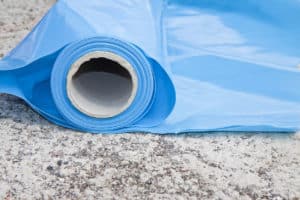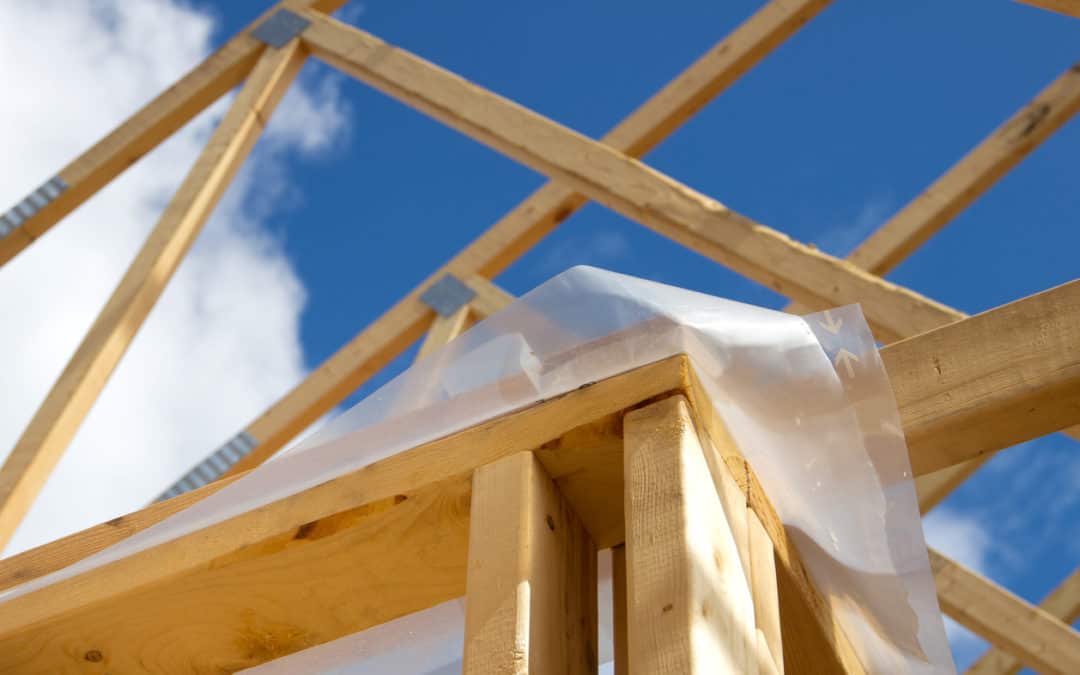What is a vapour barrier?
A vapour barrier is a material that will slow the transfer of moisture through building assemblies. The purpose of a vapour barrier in manufactured homes, mobile homes or RVs are similar to other residences, but applications vary according to geographic location and climate. When choosing the type of vapour barrier for your project, consider the climate you are building in, as well as the substrate. Each manufacturer will have its own specifications for its product line.
Depending on your geographic location, there may be different requirements for your vapour barrier to prevent or limit moisture infiltration. Walls built in cold climates must protect against the conduction of moisture through studs and joists from the earth behind the exterior cladding. The moisture can condense and lead to mould growth, which will detract from the warmth of the room air (R-value) and cause rot in wood members. In a hot climate, a vapour barrier may be needed to protect interior finishes from moisture coming through the substrate during humid weather conditions.
In northern and central North America, a polyethylene vapour barrier or membrane should be used on the exterior of the wall assembly. It should fully cover insulation to prevent moisture from condensing behind the insulation and entering the enclosed space. A gypsum drywall interior finish is recommended in these areas to ensure adequate drying potential for any absorbed moisture that passes through the vapour barrier.
In southern and coastal climates, a polyethylene vapour retarder should be used on the interior of the wall assembly. It should cover all gypsum boards to prevent moisture from passing through substrate such as concrete or wood sheathing behind it. Polyethylene is not recommended for use in this, but other materials are available.
If you are building using ICF or concrete form, there are vapour barriers that are designed for use with these systems. As well, each manufacturer will have their own recommendations for what product should be used in your project. Check the manual before beginning construction.
Sometimes it is not practical to install a vapour barrier because of financial or site limitations. If a vapour barrier is not installed, consider using a breathable barrier to protect the wall from water damage and minimize condensation issues.

Do I need a vapour barrier if I use spray insulation?
In addition to an interior vapour retarder, most insulation manufacturers recommend the installation of an exterior vapour barrier between the wall assembly and exterior cladding.
Exterior applications may require a pre-construction vapour barrier (to protect framing members during construction) or a post-construction vapour barrier (to control dew point and guard against moisture entering the cavity).
If you follow the requirements as prescribed by the building code, you should not have problems with moisture and mould growth in your home. The Building Code requires a vapour barrier on basement walls containing heated space to prevent condensation from occurring within insulation assemblies. This requirement does not apply if the basement is unfinished or if it does not contain heated space. The vapour barrier should be applied between the insulation and the interior side of the basement wall.
The building code also requires that when insulating an exterior foundation, you install a rigid plastic air-and-vapour barrier on top of exterior insulation or under drywall to provide a continuous air barrier. This is to prevent outside moisture from entering your home and condensing on cold surfaces such as insulated foundation walls during the winter.
In general, a vapour barrier is required for exterior spray foam insulation of crawl spaces or foundations if they are heated or have enclosed heated areas within them, such as basements.
This air barrier layer needs to include the innermost layer of your drywall. Many new builders will think that it’s the vapour barrier, and they’d be completely wrong. In fact, you can’t use a membrane-type vapour barrier behind drywall because it won’t breathe at all! There is an exception to this, though: if you’re building in an area of exceptionally high humidity, you may need to include a vapour barrier.
Unfortunately, it’s not this simple. If you’re building in an area of high humidity, your job is to make sure the moisture produced by the occupants doesn’t get into the wall cavity. This requires that you either ventilate that area or stop any air movement across that area (i.e. you need an air barrier). If you just use spray foam or cellulose insulation, there’s nothing to stop humidity from getting into the wall cavity. Humidity will displace the air in your wall cavity and condense on any cold surfaces it can find (i.e., metal studs).
This is definitely a concern for our climate, but it’s also a major cause of mould/moisture damage in many parts of North America. In fact, this area is the main reason I’m switching from cellulose to spray foam insulation–with an air barrier up against the drywall; you don’t have to worry about your insulation getting wet!

Recent Comments